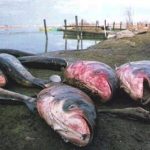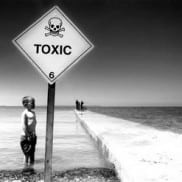National Cyanide Consultation
Consultation but no action
Cyanide: it sounds deadly and it is
Not just to people but to aquatic life such as fish. The national cyanide consultation was an effort by three federal agencies to work together in an efficient way to identify a level of cyanide that would protect threatened and endangered species across the United States. But let’s start from the beginning.
The U.S. Environmental Protection Agency (EPA) is charged under the Clean Water Act with identifying recommended criteria to states—essentially acceptable levels of pollutants in water. Under the Endangered Species Act it is also required to consult with the nation’s expert fish and wildlife agencies to see if its actions will jeopardize populations of threatened and endangered species. Once a state adopts criteria, generally based on the EPA-recommended criteria, it must submit them to EPA for approval. EPA’s approval action triggers the requirement for it to consult with the expert agencies.
In 2001, EPA, the U.S. Fish and Wildlife Service (FWS), and the National Marine Fisheries Service (NMFS) came up with a plan to consult on these criteria at the national level, to achieve more efficiency. They chose cyanide for their first national consultation. In 2004, EPA completed a first draft of its report to start the process. By 2010, EPA had received back from FWS and NMFS draft copies of their “biological opinions,” the documents in which they set out their conclusions about how a proposed action will affect species on the brink of extinction.
FWS told EPA that its acceptable level of cyanide in water was not, in fact, acceptable because it would jeopardize the continued existence of 178 species listed as threatened or endangered under the 
For example, FWS concluded that for these species, cyanide at EPA-recommended levels was “likely to substantially reduce their reproduction by reducing the number of eggs spawned by females, reducing the hatchability of spawned eggs, and by reducing the survivorship of young fish” as well as to “effect growth, swimming performance, condition, and development,” and some species were “likely to experience substantial reductions in survival.” Suffice it to say that EPA did not like these results. The process came to a standstill.
NWEA Acts
In July 2015, NWEA sent Freedom of Information Act requests to the three agencies. Finding that the consultation had simply come to a screeching halt, despite the fact that EPA had said it was relying on the national consultation to address its approval of Washington’s cyanide criteria, in January 2016, NWEA sued the expert fish and wildlife agencies to force them to complete the consultation. On May 4, 2016 EPA nicely helped out the FWS and NMFS by withdrawing its request for the consultation—the one that had given them the bad news about the cyanide criteria they recommend to the states—thereby mooting NWEA’s lawsuit. But don’t worry, the agencies all “look forward to continuing to collaborate.”

